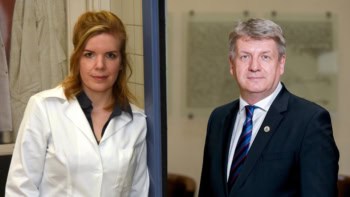A robotic mission to Mars and an Earth monitoring system are among the new activities to be funded in Europe's space programme over the next three to five years. Ministers from the 17 member states of the European Space Agency (ESA) and Canada meeting in Berlin on December 5 and 6 approved a €8.25bn programme, some 98% of the funding requested by the agency. Such meetings are held every two to three years to set Europe's space priorities.
Ministers agreed that ESA’s science programme will receive €2.1bn over the next five years, which is what the agency had asked for. This means that funding for science will rise by 2.5% per year, keeping it in line with inflation. Previously the science budget had remained flat and there was therefore “an erosion of buying power” in ESA speak. ESA spokesman Franco Bonacina says that the Bepi-Colombo mission to Mercury, due to take off in 2012 but which some had feared may be axed, should now be safe.
Most other parts of the ESA programme received all or nearly all the money that had been requested by the agency. But a new project being organized jointly with the European Union called Global Monitoring for Environment and Security (GMES), receives some €250m, €50m more than was asked for. This project will integrate all available Earth monitoring data, whether obtained in space or on the ground, and launch a new set of Earth-observation satellites. This will allow scientists to improve their understanding of the climate and to monitor natural disasters such as earthquakes and floods, and also allow the EU and its member states to monitor fishing quotas and carry out other surveillance tasks.
Another project to get more than was asked for was the Exomars mission. Due to take off in 2011, this will involve sending a rover to search for signs of life on Mars. It will receive some €550m over the next six years. This will be complemented by a further €150m to start the development of future robotic and human exploration missions to the Moon and Mars. However, some €50m requested to begin developing a replacement to the Soyuz manned spacecraft, known as Clipper, with Russia over the next two years was not forthcoming. Ministers felt that the Clipper programme was “not yet mature enough”, according to Bonacina.
There was also no explicit money for a replacement to the CryoSat satellite, which was supposed to study the effect of climate change on the Earth’s polar ice caps but which was lost shortly after take off last October. But, says Bonacina, with the Earth observation programme receiving nearly full funding, there is a good chance that a successor to Cryosat will be built.
In addition to thrashing out ESA’s budget, ministers at the Berlin meeting also decided that all missions developed by ESA and its member states must use European launchers. Bonacina says that it may be more expensive to use the Ariane, Soyez or forthcoming Vega launchers than those from overseas but that doing so ensures European taxpayers’ money is well spent.



